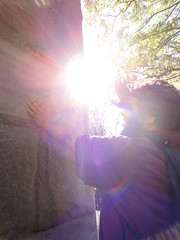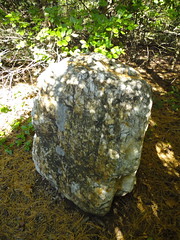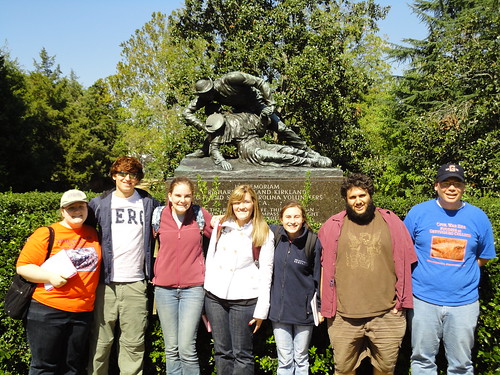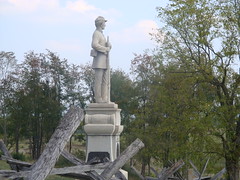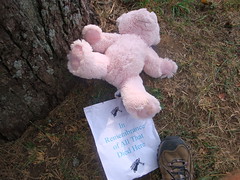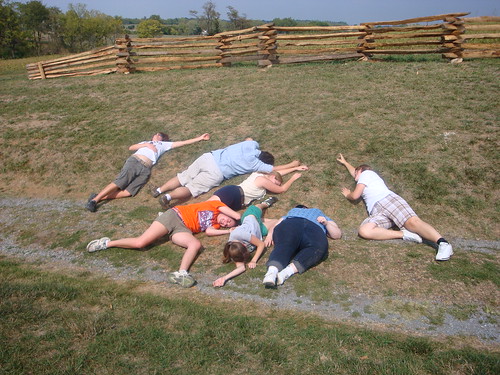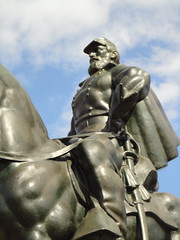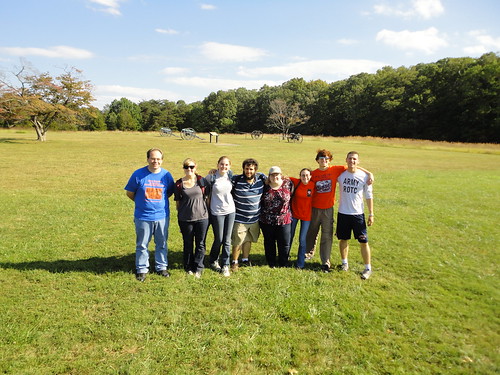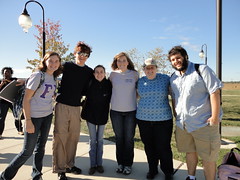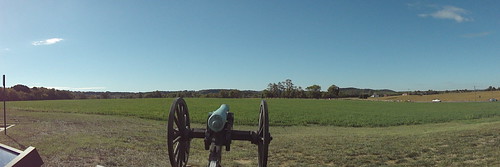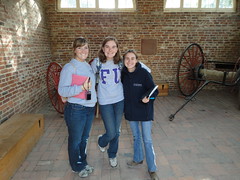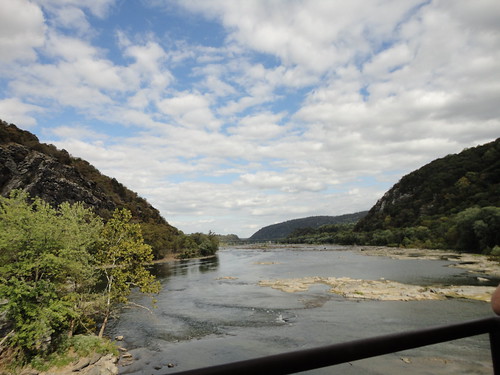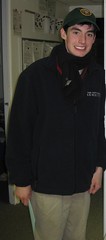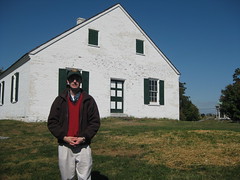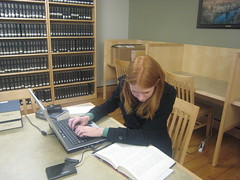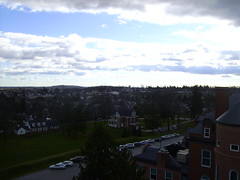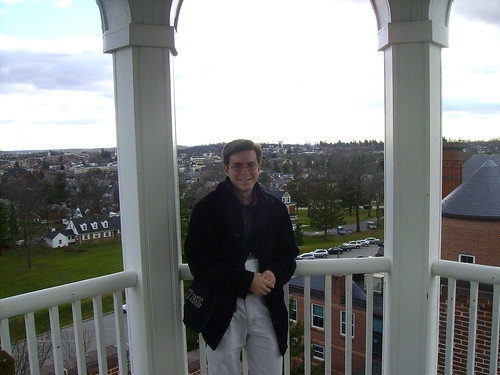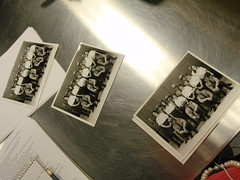We took our last field trip on Friday. Early Friday morning, we all loaded the bus one final time, and headed off for a day in Washington, D.C. It was a busy day, but one full of memories we will never forget.
Our first stop was at Arlington House at Arlington National Cemetery. As we topped the heights on which the house sits we began to understand Mary Custis Lee’s obsessive mourning for her childhood home; the view was breathtaking, a panoramic view of the Potomac River, a light mist curling around the banks, with the buzzing city on the other side the Capitol building just visible on the horizon was enough to bring us all to a complete standstill. We also toured the house itself where we were given a lesson in the trials of preservation and interpretation as we witnessed the reconstruction taking place within the house. Outside the house, we walked through the Civil War portions of the Arlington National Cemetery. Stopping at the original Tomb of the Unknown Soldier proved a powerful moment, reminding us of the anonymous deaths that marked the Civil War.
After Arlington House, we toured Ford’s Theatre. A new museum graces the ground floor of the still working theatre. The museum focuses not only on the assassination, but also on Lincoln’s presidency. It was probably one of the best museums I have had the privilege to walk through this semester. One of the most powerful moments arrived as we saw the box in which Booth shot Lincoln. Observing the seating, knowing that Lincoln spent his last moments in the box, reawakened the tragedy of the assassination that had dulled with so many retellings.
Our next stop took us to the Frederick Douglass House in Anacostia. Here we pelted our guide with questions concerning the memory of Frederick Douglass throughout history. The excellent preservation of the house itself was astounding to see, especially when compared to the condition of the Arlington House. Comparing the two made us wonder who is currently winning the war for memory, the Lost Cause adherents, or the Emancipationists?
Our next two stops shared certain parallels. First, we stopped at the Lincoln monument in Lincoln Park dedicated to emancipation. The kneeling slave at Lincoln’s feet sends a message of subjugation that is disconcerting to witness, especially immediately after a tour of the Frederick Douglass House. After the Lincoln monument, we proceeded to a little remembered monument, despite its massive size. The monument to Grant, towering in front of the Capitol building was originally meant to anchor the other end of the mall, directly across from the Lincoln Memorial. Unfortunately, in the battle for memory, Grant was forgotten in favor of Lost Cause heroes. His monument goes unnoticed for the most part today.
Our final stop was at the Lincoln Memorial. We arrived after dark, and as a result, the memorial was lit up with a bright white light. The moment was one filled with meaning for all of us as we stood in front of the giant statue of the Great Emancipator. It was a climactic moment for the semester as we sensed the greatness of the man depicted before us. As we left the Memorial, we left a bit of ourselves behind, a piece of memory to be visited in the years to come as we look back on this semester.
We returned home with a bit of sadness, realizing that we will never again return to the Appleford after a day of Civil War history. It has been a wonderful semester filled with laughter, learning, and family-like bonds of friendships. It will be heartbreaking to leave at the end of the semester, but we’ll return to our home institutions with new friendships and a deeper understanding of the war as a whole. Thank you Gettysburg College!

